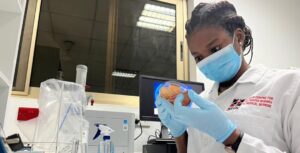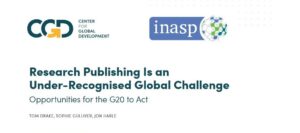Nepal’s earthquake epicentre all set to welcome new tourists
The historic district of Gorkha in western Nepal suffered a huge blow from last year’s earthquake. The district, famous all over the world as home of the brave Gurkha soldiers, once again came to limelight as the epicentre of the 7.8 Magnitude earthquake that claimed over 9000 lives in Nepal.
A tourism expert, Dr Him Lal Ghimire, has highlighted the tourism attractions of Gorkha and identified ways of reviving tourism industry in the district, which had withered following the earthquake.
In his research article ‘Tourism in Gorkha: A proposition to Revive Tourism After Devastating Earthquakes’ published in the Journal of Tourism and Hospitality Education, Dr Ghimire makes a strong case for the promotion of Gorkha as a frequently visited tourist destination.
“The message that Gorkha, being the epicentre of the earthquake, must have been totally devastated and might not be safe to visit is wrong,” says Dr Ghimire. ” There were a few trails that were damaged, but they have already been repaired. And now everything else related to tourism is in place and the district is safe to visit.”
The research article explains the diversity that Gorkha boasts in terms of cultural, historical and natural heritage. It also explains the feasibility of the town being developed as a major tourist destination due to its proximity to capital Kathmandu, accessibility and strategic location – on the way to Pokhara and Chitwan, the major tourist attractions of Nepal after Kathmandu.
Gorkha is just 140 kilometres (87 miles) from the capital Kathmandu and it is well connected by road. It is just about 23-30 kilometres (approx. 14-18 miles) off the highway connecting Kathmandu with major tourist destinations Pokhara, Chitwan and Lumbini.
Home to the recently opened Manaslu Conservation Area, the Gorkha district has lofty mountains, beautiful trekking trails, rich ethnic culture, important Hindu temples that include Manakamana (wish-fulfilling Goddess), Gorakhnath and Gorkha Kali, and Buddhist monasteries for pilgrimage and historical sites to visit. Gorkha is the birthplace of King Prithvi Narayan Shah, the founder of Nepal. Manakamana has been one of the most visited and famous pilgrimage sites in Nepal as it is connected with cable car from Prithivi Highway.
“You can get views of three important mountain ranges from Gorkha: Annapurna, Manaslu and Ganesh Himal,” said Dr Ghimire. “Likewise, it is rich in cultural heritage. Ethnic communities ranging from Chepang, Gurung, Brahmin-Chhetri and Magars live in the district.”
Despite its diverse culture and natural heritage and proximity from the capital, Gorkha does not attract as much tourists as might be expected.
“When so many tourists go to Pokhara, Chitwan and Lumbini via that route, there is no reason why Gorkha should not be included in the itinerary as a stop over,” said Dr Ghimire. “It has everything to offer from natural beauty to cultural heritage to historical monuments. It just takes some willpower on the part of the tourism entrepreneurs and policymakers to include Gorkha in the tour packages of Pokhara, Chitwan and Lumbini; and it will easily drive tourists to Gorkha.”
The article proposes various methods such as Visit Gorkha Year, 60th anniversary celebration of Manaslu Expedition, Home Stays development, among others for the revival of tourism in Gorkha.
The article “Tourism in Gorkha: A proposition to Revive Tourism After Devastating Earthquakes”, appears on the latest issue (Vol. 6, 2016) of the Journal of Tourism and Hospitality Education, pages 67- 94. The article is made available online via Nepal Journals Online (NepJOL) platform, which is part of the JOL Project supported by INASP.
About the Journal
Journal of Tourism and Hospitality Education is an annual journal that covers issues related to tourism in Nepal. The journal, edited by Prof. Dr. Ramesh Raj Kunwar, is being published since 2010 by AITM School of Hotel Management.
About NepJOL
NepJOL hosts over 110 journals published from Nepal, covering the full range of academic disciplines. The objective of NepJOL is to give greater visibility to participating journals and to the research they convey. NepJOL was initiated in June 2006 and officially launched in September 2007. It is a project supported by the International Network for the Availability of Scientific Publication (INASP) and locally managed by Tribhuvan University Central Library. It aims to promote the awareness and use of Nepal-published journals in all disciplines by providing access to tables of contents (TOCs), abstracts and full text on the Internet.
About INASP
INASP is an international development charity working with a global network of partners to improve production, sharing and use of research information and knowledge, so that countries are equipped to solve their development challenges. In particular, INASP works to strengthen the availability, access and use of international research information by researchers in developing countries and the production, quality, dissemination and access of research outputs from researchers in those same countries.
Disclaimer: Research published in journals hosted on the NepJOL platform is selected by the journals in accordance with their own editorial processes and criteria. INASP and Tribhuvan University Central Library provide hosting and guidance on good practices but are not involved in selection of research.
For Further Information
Thakur Amgai, Communications Consultant, INASP
email tamgai@inasp.info
Dr Sian Harris, Communications Coordinator, INASP
email sharris@inasp.info




